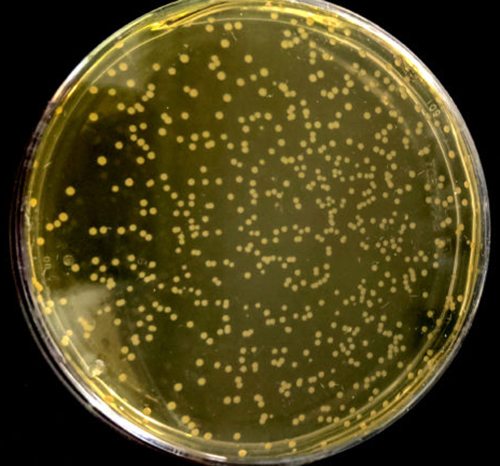Use of synthetic genetics to replicate an infectious disease agent is a scientific accomplishment that many microbiologists and clinical laboratory managers expected would happen
Microbiologists and infectious disease doctors are quite familiar with Escherichia coli (E. coli). The bacterium has caused much human sickness and even death around the globe, and its antibiotic resistant strains are becoming increasingly difficult to eradicate.
Now, scientists in England have created a synthetic “recoded” version of E. coli bacteria that is being used in a positive way—to fight disease. Their discovery is being heralded as an important breakthrough in the quest to custom-alter DNA to create synthetic forms of life that one day could be designed to fight specific infections, create new drugs, or produce tools to diagnose or treat disease.
Scientists worldwide working in the field of synthetic genomics are looking for ways to modify genomes in order to produce new weapons against infection and disease. This research could eventually produce methods for doctors—after diagnosing a patient’s specific strain of bacteria—to then use custom-altered DNA as an effective weapon against that patient’s specific bacterial infection.
This latest milestone is the result of a five-year quest by researchers at the Medical Research Council Laboratory of Molecular Biology (MRC-LMB) in Cambridge, England, to create a man-made version of the intestinal bacteria by redesigning its four-million-base-pair genetic code.
The MRC-LMB lab’s success marks the first time a living organism has been created with a compressed genetic code.
The researchers published their findings in the journal Nature.
Synthetic Genomics and Clinical Laboratories
Benjamin A. Blount, PhD, a postdoctoral research associate at Imperial College London, and Tom Ellis, PhD, Professor in Synthetic Genome Engineering at Imperial College London, praised the MRC-LMB team’s accomplishment in a subsequent Nature article.
“This is a landmark in the emerging field of synthetic genomics and finally applies the technology to the laboratory’s workhorse bacterium,” they wrote. “Synthetic genomics offers a new way of life, while at the same time moving synthetic biology towards a future in which genomes can be written to design.”
All known forms of life on Earth contain 64 codons—a specific sequence of three consecutive nucleotides that corresponds with a specific amino acid or stop signal during protein synthesis. Jason Chin, PhD, Program Lead at MRC-LMB, said biologists long have questioned why there are 20 amino acids encoded by 64 codons.
“Is there any function to having more than one codon to encode each amino acid?” Chin asked during an interview with the Cambridge Independent. “What would happen if you made an organism that used a reduced set of codons?”
The MRC-LMB research team took an important step toward answering that question. Their synthetic E. coli strain, dubbed Syn61, was recoded through “genome-wide substitution of target codons by defined synonyms.” To do so, researchers mastered a new piece-by-piece technique that enabled them to recode 18,214 codons to create an organism with a 61-codon genome that functions without a previously essential transfer RNA.
“Our synthetic genome implements a defined recoding and refactoring scheme–with simple corrections at just seven positions–to replace every known occurrence of two sense codons and a stop codon in the genome,” lead author Julius Fredens, PhD, a post-doctoral research associate at MRC, and colleagues, wrote in their paper.

Joshua Atkinson, PhD, a postdoctoral research associate at Rice University in Houston, labeled the breakthrough a “tour de force” in the field of synthetic genomics. “This achievement sets a new world record in synthetic genomics by yielding a genome that is four times larger than the pioneering synthesis of the one-million-base-pair Mycoplasma mycoides genome,” he stated in Synthetic Biology.
“Synthetic genomics is enabling the simplification of recoded organisms; the previous study minimized the total number of genes and this new study simplified the way those genes are encoded.”
Manmade Bacteria That are Immune to Infections
Researchers from the J. Craig Venter Institute in Rockville, Maryland, created the first synthetic genome in 2010. According to an article in Nature, the Venter Institute successfully synthesized the Mycoplasma mycoides genome and used it “reboot” a cell from a different species of bacterium.
The MRC-LMB team’s success may prove more significant.
“This new synthetic E. coli should not be able to decode DNA from any other organism and therefore it should not be possible to infect it with a virus,” the MRC-LMB stated in a news release heralding the lab’s breakthrough. “With E. coli already being an important workhorse of biotechnology and biological research, this study is the first time any commonly used model organism has had its genome designed and fully synthesized and this synthetic version could become an important resource for future development of new types of molecules.”
Because the MRC-LMB team was able to remove transfer RNA and release factors that decode three codons from the E. coli bacteria, their achievement may be the springboard to designing manmade bacteria that are immune to infections or could be turned into new drugs.
“This may enable these codons to be cleanly reassigned and facilitate the incorporation of multiple non-canonical amino acids. This greatly expands the scope of using non-canonical amino acids as unique tools for biological research,” the MRC-LMB news release added.
Though synthetic genomics impact on clinical laboratory diagnostics is yet to be known, medical laboratory leaders should be mindful of the potential for rapid innovation in this field as proof-of-concept laboratory innovations are translated into real-world applications.
—Andrea Downing Peck
Related Information:
Scientists Redesigned an Entire Genome to Create the Most Synthetic Life Form Yet
World’s First Synthetic Organism with Fully Recoded DNA Is Created at MRC LMB in Cambridge
Creating an Entire Bacterial Genome with a Compressed Genetic Code
Total Synthesis of Escherichia Coli with a Recoded Genome
Construction of an Escherichia Coli Genome with Fewer Codons Sets Records
Life Simplified: Recompiling a Bacterial Genome for Synonymous Codon Compression
Creation of a Bacterial Cell Controlled by a Chemically Synthesized Genome



